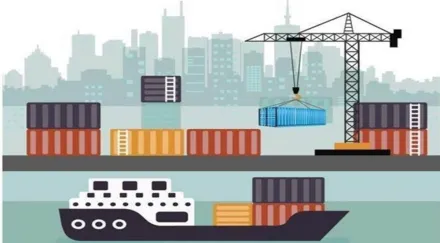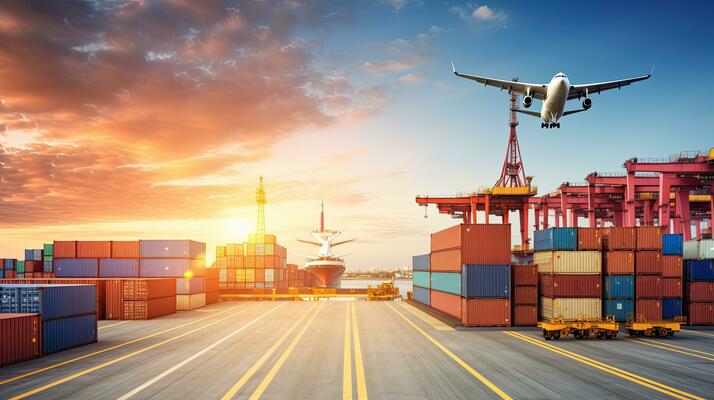A New Era of Global Trade for Exporters
In a world where market access and reduced trade barriers decide the fate of businesses, the Free Trade Agreement FTA route is fast becoming a favourite among exporters. From large manufacturers to small independent brands, everyone is exploring new territories through preferential trade deals. The growing demand for Australia and UAE pacts is testimony to how global trade preferences are shifting, and exporters are eager to make the most of these golden opportunities.
The global economy might be facing challenges, but for exporters, it’s all about agility, smart strategies, and aligning with markets that offer preferential treatment through FTAs. Among the most sought-after agreements right now are those with Australia and the United Arab Emirates (UAE), both opening fresh avenues for a range of industries.
Why FTAs Are Turning Heads
The FTA route provides exporters with several competitive advantages. Reduced or zero-duty tariffs, easier market access, and simplified regulations are a few of the irresistible perks. But beyond just numbers and duty savings, exporters are recognising the long-term strategic value of being part of a nation’s FTA framework.

In today’s fiercely competitive market, being able to offer products at competitive prices while ensuring faster clearances and less regulatory red tape can make a world of difference. It isn’t just about selling products internationally — it’s about building sustainable, long-term business relationships and positioning brands in lucrative markets.
Exporters across industries — from textiles and electronics to agri-products and wellness brands — are seeing a significant uptick in enquiries and orders from markets covered under FTAs. As trade facilitation improves, it’s encouraging even mid-sized and emerging brands to think bigger, scale up production, and tap into international demand.


Australia and UAE: The Star Performers
Among the long list of India’s Free Trade Agreements, the recent pacts with Australia and the UAE have created a noticeable buzz in trade circles. Both countries offer vibrant markets, rising consumer demand, and business environments that are welcoming towards international brands.
The Australia-India Economic Cooperation and Trade Agreement (ECTA) and the India-UAE Comprehensive Economic Partnership Agreement (CEPA) have drastically lowered duties on a wide range of products. From jewellery and pharmaceuticals to engineering goods and processed food, exporters are finding it easier to enter these markets, establish distribution networks, and build brand loyalty.
For many businesses, these FTAs are more than just trade deals — they are gateways to strategically positioned markets. Australia, with its proximity to the Asia-Pacific region, offers a launchpad into countries like New Zealand and parts of Southeast Asia. Meanwhile, the UAE acts as a crucial hub for exports to the GCC, Africa, and even Europe, making it one of the most valuable trade partnerships for exporters aiming to expand their footprint.
Exporters Share Their Wins
Exporters who have opted for the FTA route have been vocal about their success stories. Textile manufacturers from India, for instance, have seen their exports to the UAE jump significantly since the CEPA came into force. Jewellery exporters have been equally upbeat, enjoying zero-duty access to a premium market, which was earlier weighed down by high import tariffs.
One entrepreneur who runs a mid-sized packaged food business shared how the Australia FTA allowed them to position their organic spice blends in premium supermarket chains across Melbourne and Sydney. “The reduced duty meant we could price competitively without compromising on quality. Orders doubled within three months, and now we’re looking at expanding into New Zealand too,” she beamed.
Another wellness brand founder spoke about the UAE’s growing appetite for herbal personal care products. “Thanks to CEPA, our products reached shelves faster, and the customs procedures were a breeze. Plus, consumers there love Indian wellness traditions. We’re growing our sales teams in Dubai and Abu Dhabi now,” he shared.
These individual narratives reflect a larger trend — exporters are no longer waiting for trade barriers to ease on their own. They’re actively exploring FTAs, restructuring their logistics, adjusting pricing strategies, and building global supply chains to stay ahead.

Simplifying the Process for New Exporters
While large exporters with established international divisions find it easier to leverage FTAs, there’s good news for emerging players too. Several trade promotion councils, chambers of commerce, and export consultancy firms are offering services to simplify the FTA application process. This has made it accessible for first-time exporters who want to try their luck in new markets but are wary of the paperwork and procedural hurdles.
Workshops, webinars, and online resources have further empowered entrepreneurs to understand eligibility criteria, documentation needs, and duty structures under different FTAs. The result? More SMEs are entering international markets, riding on the back of favourable trade agreements, and adding diversity to the export basket.
The FTA route is no longer the playground of big corporations alone. Small homegrown brands, artisanal craft clusters, and tech startups are confidently taking their ideas global.
The Competitive Edge in Tough Times
In an economic climate where inflation, logistics bottlenecks, and fluctuating currencies pose constant challenges, FTAs give exporters a much-needed competitive edge. Reduced or zero-duty access can significantly improve profit margins, allowing businesses to absorb rising operational costs or offer discounts without hurting their bottom line.
Moreover, the strategic importance of Australia and the UAE cannot be overstated. Both are high-consumption markets with a significant appetite for international products, and with the added advantage of preferential access, exporters find it easier to build customer trust, negotiate better deals, and scale operations.
As global trade dynamics shift, being part of an FTA-aligned market gives exporters a voice at the table, allowing them to influence trends, contribute to policy advocacy, and strengthen bilateral trade relations. It transforms exporters from passive sellers to active stakeholders in shaping global commerce.
Future FTAs on the Radar
Encouraged by the overwhelming response to the Australia and UAE pacts, exporters are eagerly awaiting upcoming trade deals. Talks are underway with the UK, Canada, and the EU, which promise to open even bigger markets with preferential terms.
Many exporters are already preparing for these future opportunities by diversifying their product lines, upgrading certifications to meet international standards, and forging partnerships with foreign distributors. It’s a proactive approach — businesses want to be ready to hit the ground running the moment new FTAs come into force.
Several trade associations have highlighted how early preparation for an FTA can pay off. From market research and pricing strategies to branding and logistics planning, exporters who start early often gain a significant first-mover advantage when new deals are signed.

How Governments Are Supporting Exporters
Recognising the pivotal role exporters play in economic growth and job creation, governments have stepped up their support. Apart from negotiating new FTAs, authorities are streamlining customs procedures, digitising trade documentation, and simplifying compliance regulations.
Export incentives, financial assistance schemes, and dedicated trade promotion initiatives are being designed to help businesses scale operations and meet global standards. Several states have even launched sector-specific export promotion policies, recognising the potential of industries like textiles, wellness, processed food, and electronics in international markets.
This synergy between government efforts and exporter initiatives has created a fertile ecosystem for global trade, with FTAs acting as the crucial bridge between domestic potential and international demand.
Conclusion: A Time to Think Global
The surge in FTA-led exports is a clear indication that Indian businesses are no longer content with catering to domestic markets alone. They’re thinking global, investing in quality, and leveraging every available opportunity to grow their brands overseas.
Australia and the UAE have set the tone, and the enthusiastic response from exporters suggests that this is only the beginning. As more FTAs come into play, businesses that adapt early, invest in compliance, and build strong international networks will be the ones to reap the maximum rewards.
For exporters, it’s not just about moving products across borders — it’s about creating legacies, transforming industries, and contributing to a more connected, prosperous world. The FTA route isn’t just a business strategy anymore — it’s a mindset. And for those ready to embrace it, the opportunities are limitless.
Do follow UAE Stories on Instagram















